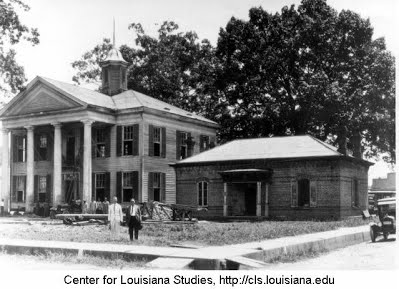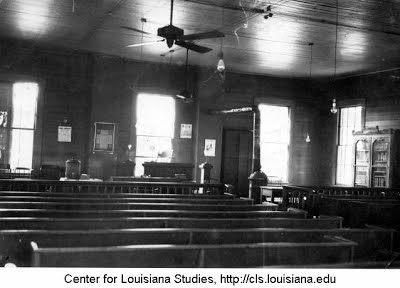In January of 1823, the Louisiana Legislature carved Lafayette Parish out of the western portion of Saint Martin Parish. At that time, there was already a jail building close to the Pinhook outpost settlement of Vermilionville.
John and William Reeves owned land adjacent to the outpost and donated property for the purpose of building the parish courthouse and other parish seat buildings.
Five months later, Jean Mouton convinced the Louisiana Legislature to direct the parish citizens to hold an election that would choose a place for the courthouse building, resulting in a contest between the Reeves plot and Mouton’s plot. Mouton won the election and on September 20, 1824, Jean Mouton donated the land where the Lafayette Parish Courthouse is currently located. The parish did maintain the jail at the river until 1827 when it was moved to the current Main Street property.

Original Lafayette Parish Courthouse 
Inside Lafayette’s First Courthouse
And the rest is history. The Village of Vermilionville, which is now the City of Lafayette, grew up around the Lafayette Parish Court House and Saint John Catholic Church, on land donated by Jean Mouton.
